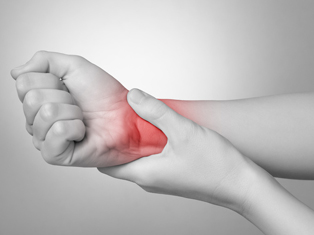Saturday night palsy is a type of neuropathy that affects the radial nerve. It happens when an object or surface presses directly on the upper arm or axilla for a long time. Roots from the cervical spine (C5) to the first thoracic (T1) spinal nerve (R1) originate in the posterior branch of the brachial plexus and form the radial nerve. It first travels deep to the axillary artery, then descends inferiorly to the teres minor, and finally spirals its way down the medial aspect of the humerus, where it rests in the spiral groove. When the radial nerve is compressed, a nerve palsy develops, which results in a loss of motor and sensory function. Generally, it occurs after alcohol intoxication and deep-arm sleep.
The possibility of Saturday night palsy occurs when an individual goes to sleep with their arm hanging over a chair or another hard surface, which results in compression within the axilla. Saturday Night Palsy, as the name suggests, occurs when a person overindulges in alcohol or drugs and then sleeps with their arm outstretched. Drugs and alcohol interfere with the normal pain receptors, preventing this person from moving or changing positions while they are asleep.
Definition:
Paralysis from musculospiral nerve ischemia caused by repeatedly jamming an arm against a hard surface is known as Saturday Night Palsy. Comatose or stuporous states, or falling asleep with an arm dangling over the side of a bed or chair, all lead to this condition. On Saturday nights, people in some cultures drink excessively, and while they’re out of it, they often sleep in a position that causes nerve compression.
Saturday Night Palsy Symptoms
Alcohol consumption followed by sleeping in an abnormal position is commonly cited as the trigger for patients’ symptoms.
Symptoms also start a few days after the first injury, which is called a delayed presentation.
- Patients experience numbness in their triceps.
- Burning pain, or any combination thereof.
- Wrist drop is also a symptom of this condition which is mostly caused by the loss of function in the extensor muscles, which are controlled by the radial nerve branches, and the preservation of function in the flexor muscles, which are controlled by other nerves in the hand and arm.
- Difficulty opening the hand and grabbing objects as a result of an inability to fully extend the thumb.
- Sensory deficiencies in the back or sides of the upper arm.
Saturday Night Palsy Recovery
Decompression is the primary focus of treatment for nerve entrapment. Sleeping on a hard surface, like a wooden chair, cause serious damage to the nerve, resulting in bruising and tissue damage near the spinal groove. Muscle spasms, myofascial adhesions, and the rate at which muscles heal all are improved with the help of certain therapies, including the Graston Technique, massage therapy, the Active Release Technique, and manual therapy. In addition, low-level laser therapy, also known as Class IV cold lasers, is mostly used to speed up the recovery process by stimulating nerve regeneration. Cold laser therapy hastens the healing process by enhancing cellular repair and reducing inflammation around the injured nerve.
Most of the time, Saturday Night Palsy patients will fully recover, but it often takes weeks or even months. It is best to seek treatment as soon as the person feels the tingling symptoms in the arm after a night out. Recovery from nerve palsy is enhanced if patients begin therapy immediately. Nerve palsy often leads to secondary complications like joint rigidity if it is not treated promptly.
Saturday Night Palsy Treatment
Saturday night palsy treatment focuses heavily on physical therapy. In physical therapy, patients often wear a splint to keep their wrists in a fully extended position. During rehabilitation, it is important to let the affected limb move as much as possible passively. This is mostly done with a dynamic splint.
Other forms of supportive care, such as systemic corticosteroids, steroid injections, nonsteroidal anti-inflammatory drugs (NSAIDs), and rest, are used in conjunction with these strategies to improve outcomes. Ultrasound-guided local injections are used in some cutting-edge treatment plans to hasten patients’ recoveries. Surgery is only used to treat severe radial nerve injuries or when a bone spur, mass, cyst, or other intrinsic process is held responsible for the compression.
 Health & Care Information
Health & Care Information 


